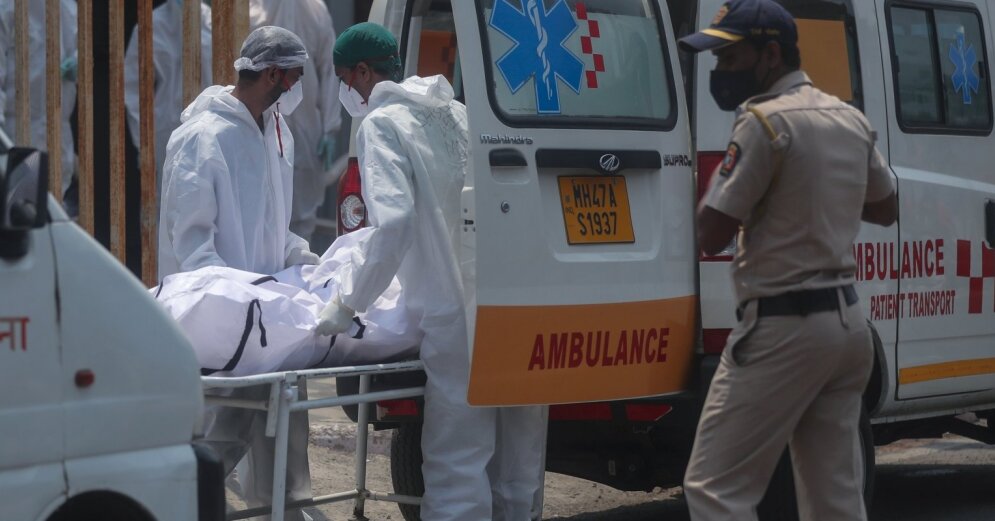New York (AP) – In March 2020, almost no New Yorker could have imagined that the historical exit restrictions in the world metropolis would result in a whole year of emergency.
Everyone would have to stay at home from now on because of Covid-19, said Governor Andrew Cuomo on March 20, 2020. “These are the most drastic measures we could take.”
At that time, the tickers of the US news channels still indicated that a total of 196 people in the US had died of Covid-19. With more than half a million corona deaths in the United States, New York will go down in history last year. There has been a lot of suffering and pain, a lot has changed – but not all for the worse. An overview:
THE SCISSOR BETWEEN POOR AND RICH: “Corona affects everyone equally,” was the saying at the beginning of the pandemic in New York, or: “We’re all in it together.” It quickly became clear that this was not entirely true: many wealthy New Yorkers – including from Manhattan – left the city at least temporarily and settled in the country or on the beach – rented or owned, in any case with more space keep your distance.
Meanwhile, the number of infections has exploded in neighborhoods in Queens, the Bronx and Brooklyn with lower average incomes, where the majority of people are also mostly ignorant and cannot work from home. The pandemic seemed to widen the gap between rich and poor while at the same time making the differences open. But the willingness to help was and remains huge. In addition, rents have fallen somewhat in some cases – and hope has risen that disclosing the problems could lead to changes in the future.
HOME OFFICE CULTURE: Even if life – and at least partly tourism – comes back to New York bit by bit in 2021, many companies and employees expect to work from home for a long time. Many city dwellers like the home office, and their employers in the towers of Manhattan have noticed that it works without open-plan office control. More flexible work could also become the new standard in the commuter metropolis of New York. Some think further: Companies could save with smaller offices, employees would have the opportunity to work from the surrounding area – or elsewhere.
OUTDOOR DINING AND PEDESTRIAN AREAS: New Yorkers have got a taste for outside dining. Many streets in Manhattan or Brooklyn have been lined with (heated) wooden outdoor patios for months. Sometimes they are brightly painted or decorated with flowers and – as long as no snowstorm sweeps the city – they are well attended. For some residents, the new street flair with restricted-traffic zones even reminded them of street restaurants in Europe – and it could stay: “I want us to adopt this model and make it part of the life of New York City for years and generations,” said Mayor Bill de Blasio.
INSTAGRAM RESTAURANTS: In addition to traditional restaurants, another gastronomy branch has developed in the New York pandemic. Numerous cooks and bakers relocated to the Internet, in so-called “ghost kitchens”. They do not have a shop, but cook or bake either at home or in a special kitchen and then deliver the food or have it picked up. Many were able to make a living in this way – and some even became gastronomic stars, such as the 27-year-old Kimberly Camara, whose donuts via Instagram regularly sell out within minutes.
COMEBACK OF CULTURE: The famous New York cultural scene has been one of the hardest hit by the pandemic. According to studies, up to two thirds of all jobs have been lost – at least temporarily. The museums were closed for months, the Broadway theaters will probably not open again until autumn at the earliest, and the Metropolitan Opera will not open until 2022.
But after a black year there are now the first signs of hope: the cinemas have recently been allowed to reopen with restrictions, and the first theaters from April. Museums are already announcing new major exhibitions for the summer, and there should also be a large cultural program in the open air – and some of that could remain.
THE LOVE WHEEL: New York, a bicycle city? Despite more than 2000 kilometers of mostly green lanes for cyclists, not really. But here too the pandemic has caused a rethink. Bicycle sellers cannot keep up with supplies, and bike sharing is booming because tens of thousands no longer want to take the subway. This is why the more than 50,000 bicycle parking spaces in public spaces are becoming scarce at times. The big city has promised to invest more in the infrastructure, because the bicycle should keep its place in New York in the future.
PARK ON THE HUDSON: In the pandemic, space and nature were in demand, and New Yorkers rediscovered a love for their many parks – whether small or large, whether Central Park, Prospect Park or Hudson River Park. Now they are all waiting eagerly for a green new addition: “Little Island”, a park built on stilts in the Hudson River and financed with millions of dollars by media mogul Barry Diller, is due to open “this spring”.
© dpa-infocom, dpa: 210318-99-870925 / 5
Kimberly Camara on Instagram
Little Island
ZUMA Wire
 –
–Xinhua
 –
–dpa


